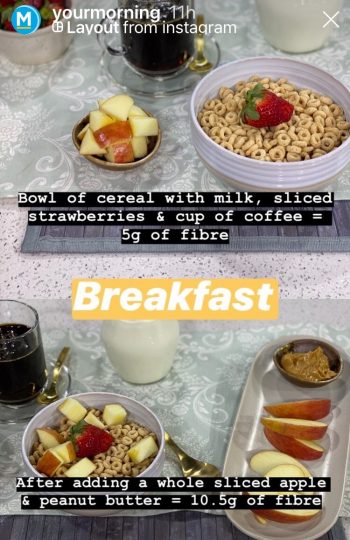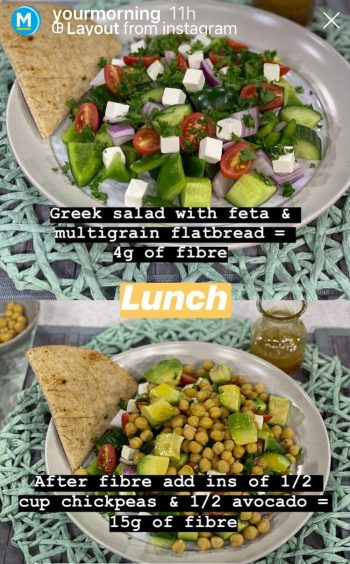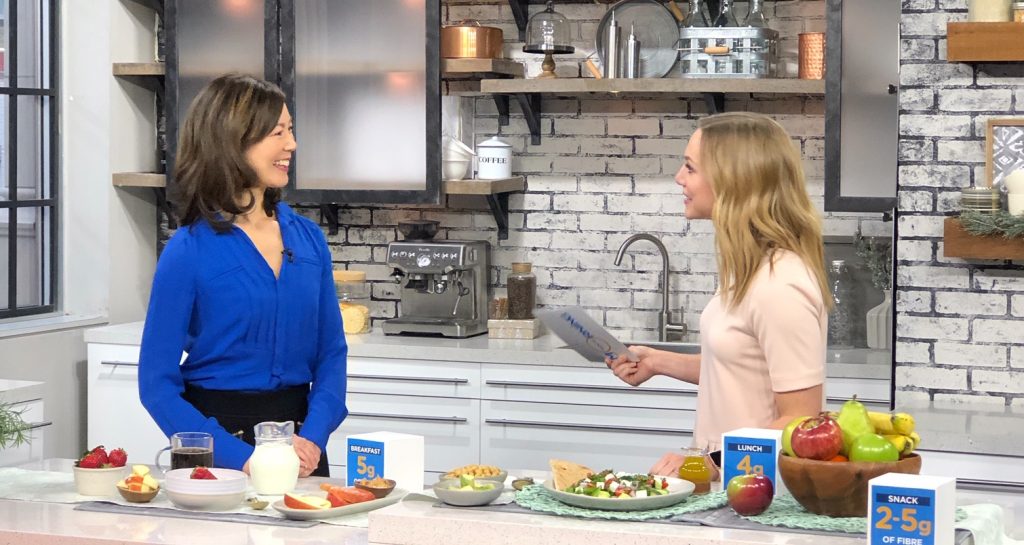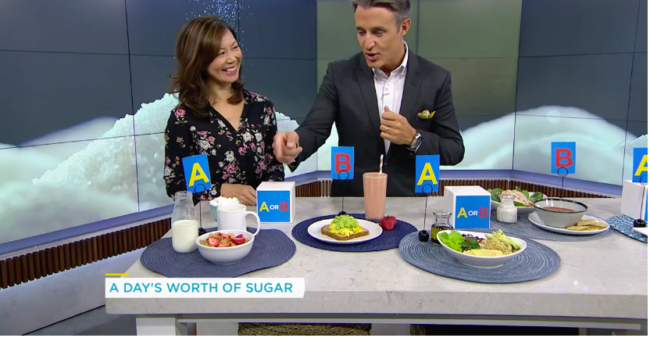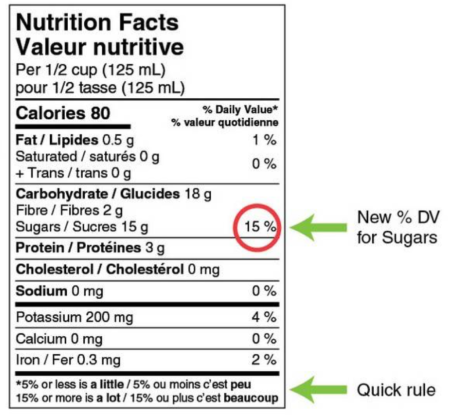
Test your nutrition IQ with this fun 5-question quiz!
Watch my interview clip on CTV Your Morning!
1) TRUE or FALSE: Brown eggs are more nutritious than white eggs.
Answer: FALSE
There really is no nutritional difference between brown eggs and white eggs. The main difference is in the hens. Generally speaking, white eggs come from hens with white feathers, and brown eggs come from hens with brown feathers!
Brown hens are slightly larger birds and need more food, so that may be a reason why brown eggs usually cost more than white eggs.
2) TRUE or FALSE: You need to drink 8 cups of water every day.
Answer: FALSE
Actually, it’s recommended that women get 9 cups of FLUID every day and men get 12 cups of FLUID every day. If you’re exercising, or if the weather is hot and humid, you may even need more fluid.
Fluid comes from the food you eat and the beverages that you drink – so milk, soup, coffee, tea, watermelon, grapes – all of that counts towards your fluid intake for the day. So the actual amount of water you need really depends on what you’re eating and drinking.
Water is always an excellent choice because it’s calorie-free and very refreshing. And here’s the best tip – take a look at your urine. If it’s light or clear, then it usually means that you’re getting enough fluids. But if it’s dark yellow, then it’s a sign of dehydration and you need more fluids.
3) TRUE or FALSE: Sea salt has the same amount of sodium as table salt.
Answer: TRUE
By weight, sea salt and table salt have the same amount of sodium. By volume though, sea salt does contain a little less sodium because sea salt crystals are larger.
The biggest differences between sea salt and table salt are: taste, texture and source.
Sea salt is made by evaporating seawater and tastes different depending on where it’s from. Sea salt does contain very small amounts of trace minerals such as calcium, magnesium and potassium.
Table salt is mined from dried-up ancient salt lakes. Some table salts include iodine, a nutrient that helps prevent thyroid disease (goiter).
4) TRUE or FALSE: Drinking lemon water first thing in the morning is a good way to detox your body.
Answer: FALSE
There is nothing magical about lemon water. Drinking lemon water in the morning actually adds extra acid into your empty stomach and this can give you a stomachache.
Another problem with lemon water is that the acid from the lemon can erode / wear down your tooth enamel. If you really love to drink lemon water, try to have a plain glass of water afterwards, and wait at least 15 minutes before brushing your teeth.
5) TRUE or FALSE: Energy drinks give you energy.
Answer: TRUE
Energy can mean calories. A bottle of energy drink can have about 100 calories, so in that sense, yes, you’re getting energy!
Energy can also mean physical energy. Energy drinks typically contain caffeine which is a stimulant. One cup of an average energy drink has almost as much caffeine as a cup of coffee. So in that sense, energy drinks will make you feel energized and alert.
The problem is that energy drinks also contain added sugar – up to 7 teaspoons in a serving- yikes! And there’s also herbal ingredients. Energy drinks are a no-no for kids, teens and pregnant/breastfeeding women.
What’s the best way to feel energized? Eat well, be active, stay hydrated and get enough sleep!
